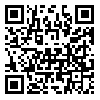Wed, May 7, 2025
[Archive]
Volume 5, Issue 1 And (9-1991)
Med J Islam Repub Iran 1991 |
Back to browse issues page
Download citation:
BibTeX | RIS | EndNote | Medlars | ProCite | Reference Manager | RefWorks
Send citation to:



BibTeX | RIS | EndNote | Medlars | ProCite | Reference Manager | RefWorks
Send citation to:
NOURAI M. THE PROCESS OF TREATMENT OF PSYCHOFLEXED HAND WITH DYNAMIC SPLINT. Med J Islam Repub Iran 1991; 5 (1) :39-42
URL: http://mjiri.iums.ac.ir/article-1-1519-en.html
URL: http://mjiri.iums.ac.ir/article-1-1519-en.html
From the Orthopedic Dept., Isfahan University of Medical Sciences, Isfahan, Islamic Republic of Iran.
Abstract: (4341 Views)
This study presents the results of the treatment afforded to seven
patients with the diagnosis of psychoflexed hands. These patients had
referred for treatment during the years 1984 through 1989. On the average
each patient received 3.5 years of follow-up. The average age for the group
was 28 years. The group included one woman the rest were male. Treatment
procedure consisted of serial casting, passive manipulation, active exercises
and dynamic splint. Psychotherapy was given throughout the treatment
period. Psychiatric consultations were also sought.
Of this number, three had excellent results, two were graded as good
and one as fair. The seventh case had to be excluded because the patient
developed acute psychotherapeutic problems.
In contrast with other techniques that undertake the treatment of the
flexion deformity of the hand without regard to psychic problems or those
that undertake such treatment from psychological approaches only, both of
which have had poor results, the technique used in this program seems to be a
good plan of treatment for this illness because it is continuous, costs less and
because the patient is constantly in touch with orthopedic specialists and with
a psychiatrist.
Type of Study: Original Research |
Subject:
Orthopedic
| Rights and permissions | |
 |
This work is licensed under a Creative Commons Attribution-NonCommercial 4.0 International License. |





